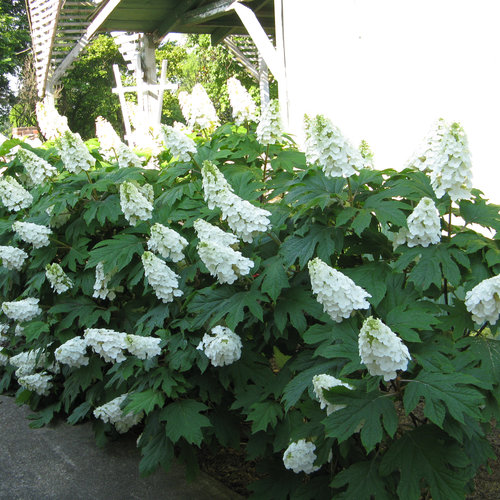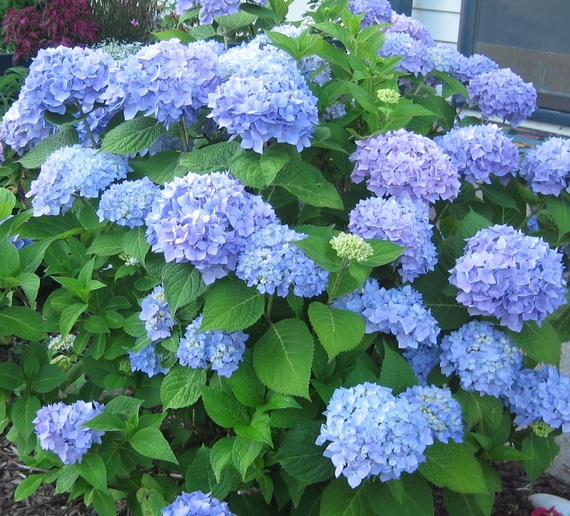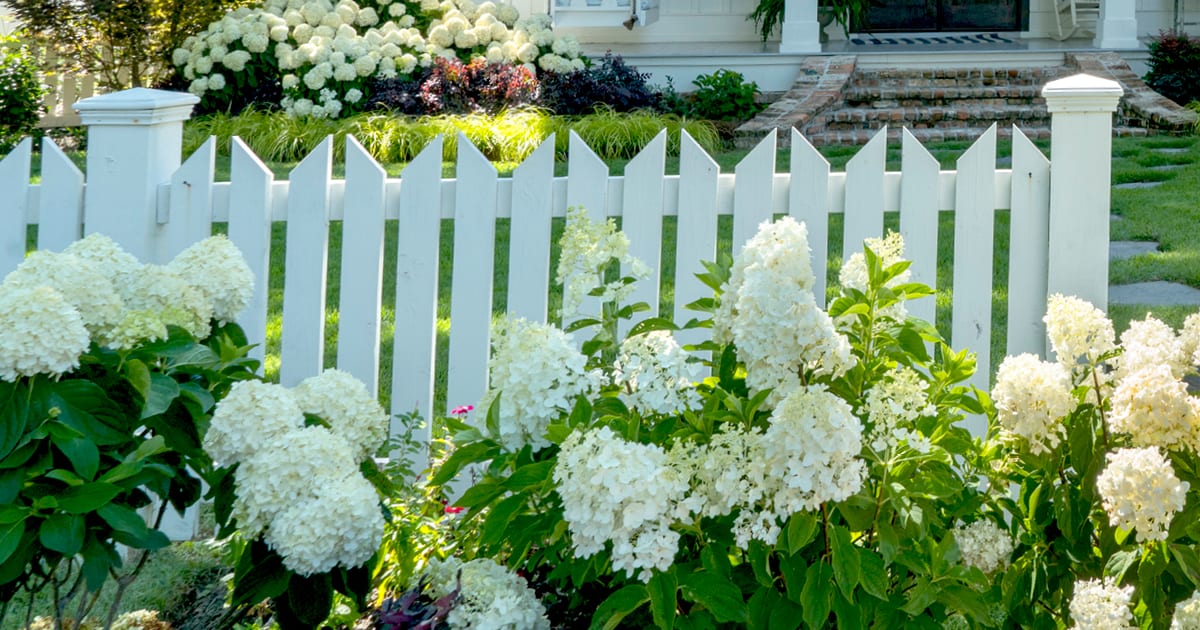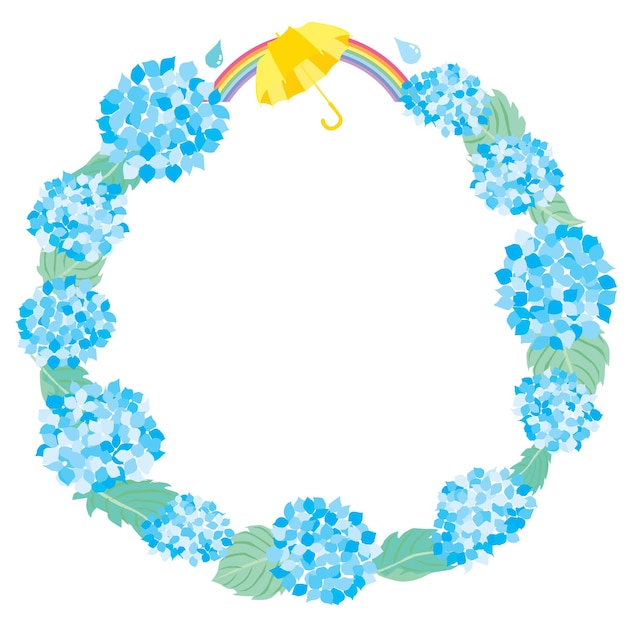How To Create A Hydrangea Border That Will
Introduction
Hydrangeas are one of the most popular flowering shrubs in the world, and for good reason. They come in a wide variety of colors, sizes, and shapes, and they can add a touch of elegance and beauty to any garden. If you're looking to create a hydrangea border, there are a few things you need to keep in mind.
In this blog post, we'll discuss the different types of hydrangeas, how to choose the right ones for your border, and how to plant and care for them. We'll also provide some tips on how to design a hydrangea border that will look stunning for years to come.
Main Content
Choosing the right hydrangeas
The first step in creating a hydrangea border is choosing the right hydrangeas for your needs. There are two main types of hydrangeas: mophead and lacecap. Mophead hydrangeas have large, round flower heads, while lacecap hydrangeas have smaller, more delicate flower heads.
Mophead hydrangeas are typically larger and more vigorous than lacecap hydrangeas. They also tend to bloom later in the season, so they're a good choice if you're looking for a late-season bloomer. Lacecap hydrangeas, on the other hand, are smaller and more compact. They tend to bloom earlier in the season, so they're a good choice if you're looking for an early-season bloomer.
In addition to mophead and lacecap hydrangeas, there are also a number of other types of hydrangeas, such as panicle hydrangeas, oakleaf hydrangeas, and climbing hydrangeas. Each type of hydrangea has its own unique characteristics, so it's important to choose the ones that will work best for your border.
Planting and caring for hydrangeas
Once you've chosen the right hydrangeas for your border, it's time to plant them. Hydrangeas prefer well-drained soil that is rich in organic matter. They also need full sun to partial shade.
When planting hydrangeas, dig a hole that is twice as wide as the root ball. Place the plant in the hole and fill it halfway with soil. Add a layer of compost to the bottom of the hole, and then fill the rest of the hole with soil. Water the plant thoroughly.
Hydrangeas need regular watering, especially during the first year after planting. They also need to be fertilized in the spring and fall. You can use a balanced fertilizer, such as 10-10-10, or a fertilizer specifically for hydrangeas.
Designing a hydrangea border
When designing a hydrangea border, there are a few things you need to keep in mind. First, you need to consider the size of the border. Hydrangeas can grow quite large, so you need to make sure the border is big enough to accommodate them.
Second, you need to consider the shape of the border. Hydrangeas can be planted in a variety of shapes, such as circles, squares, or rectangles. The shape of the border will depend on the size of the border and the overall style of your garden.
Third, you need to consider the color of the hydrangeas. Hydrangeas come in a wide variety of colors, so you can choose colors that will complement the other plants in your garden. You can also choose hydrangeas that will change color throughout the season.
Finally, you need to consider the maintenance requirements of the hydrangeas. Some hydrangeas require more maintenance than others. If you're not sure which hydrangeas are right for you, ask a local nursery for advice.
Conclusion
Hydrangeas are a beautiful and versatile plant that can add a touch of elegance and beauty to any garden. With a little planning, you can create a hydrangea border that will look stunning for years to come.
Hydrangeas are a beautiful and versatile flower that can be used to create stunning borders in your garden. If you're thinking about adding a hydrangea border to your yard, I highly recommend checking out . This website has a wealth of information on hydrangeas, including tips on choosing the right varieties, planting and care, and troubleshooting problems.
In addition to its comprehensive information on hydrangeas, also features beautiful photos of hydrangea borders in all stages of growth. This can be a great way to get inspiration for your own border.
Whether you're a beginner or an experienced gardener, is a valuable resource for anyone who wants to learn more about hydrangea borders. So what are you waiting for? Visit today!
FAQ of hydrangea border
Question 1: What are the best hydrangeas for a border?
Answer: There are many different types of hydrangeas, so it's important to choose the right ones for your climate and soil conditions. Some popular choices for borders include:
- Oakleaf hydrangea: This type of hydrangea is known for its large, showy blooms that can range in color from white to pink to blue. It is hardy in zones 5-9 and can grow to be 4-8 feet tall and wide.

- Mophead hydrangea: This type of hydrangea is also known for its large, showy blooms. The blooms are typically white, but they can also be pink or blue. Mophead hydrangeas are hardy in zones 4-9 and can grow to be 6-8 feet tall and wide.

- Smooth hydrangea: This type of hydrangea is known for its delicate, cascading blooms. The blooms are typically white, but they can also be pink or blue. Smooth hydrangeas are hardy in zones 4-9 and can grow to be 3-6 feet tall and wide.

Question 2: How do I plant a hydrangea border?
Answer: To plant a hydrangea border, you will need to:
- Choose a sunny or partially shaded location with well-drained soil.
- Dig a hole that is twice as wide and as deep as the root ball of the hydrangea.
- Amend the soil with compost or peat moss to improve drainage.
- Place the hydrangea in the hole and backfill with soil.
- Water the hydrangea thoroughly.
- Mulch around the base of the hydrangea to help retain moisture and suppress weeds.
Question 3: How do I care for a hydrangea border?
Answer: Hydrangeas are relatively easy to care for, but they do require some basic care. Here are some tips for caring for a hydrangea border:
- Water the hydrangeas regularly, especially during hot, dry weather.
- Fertilize the hydrangeas in early spring with a balanced fertilizer.
- Prune the hydrangeas in late winter or early spring.
- Mulch around the base of the hydrangeas to help retain moisture and suppress weeds.
Question 4: What are some common problems with hydrangea borders?
Answer: Some common problems with hydrangea borders include:
- Leaf spot: This is a fungal disease that can cause leaves to turn yellow, brown, or black.
- Powdery mildew: This is a fungal disease that can cause leaves to become covered in a white, powdery film.
- Aphids: These small insects can suck the sap from hydrangea leaves, causing them to wilt and yellow.
- Scale: These small insects can attach themselves to hydrangea stems and leaves, causing them to become discolored and stunted.
Question 5: How do I overwinter hydrangea borders?
Answer: In colder climates, hydrangea borders may need to be protected from the cold winter weather. Here are some tips for overwintering hydrangea borders:
- In zones 4-6, you may need to cover the hydrangeas with a burlap sack or other protective covering.
- In zones 3-4, you may need to dig up the hydrangeas and store them in a cool, dry place for the winter.
Image of hydrangea border
5 different images of "hydrangea border" from Pinterest:
- A white picket fence with a row of hydrangeas planted along the top.

- A low stone wall with a border of hydrangeas in shades of pink, blue, and white.

- A raised bed with a border of hydrangeas that spills over the edge.

- A circular border of hydrangeas in the middle of a lawn.

- A hedge of hydrangeas that separates a garden from a patio.

Post a Comment for "How To Create A Hydrangea Border That Will"